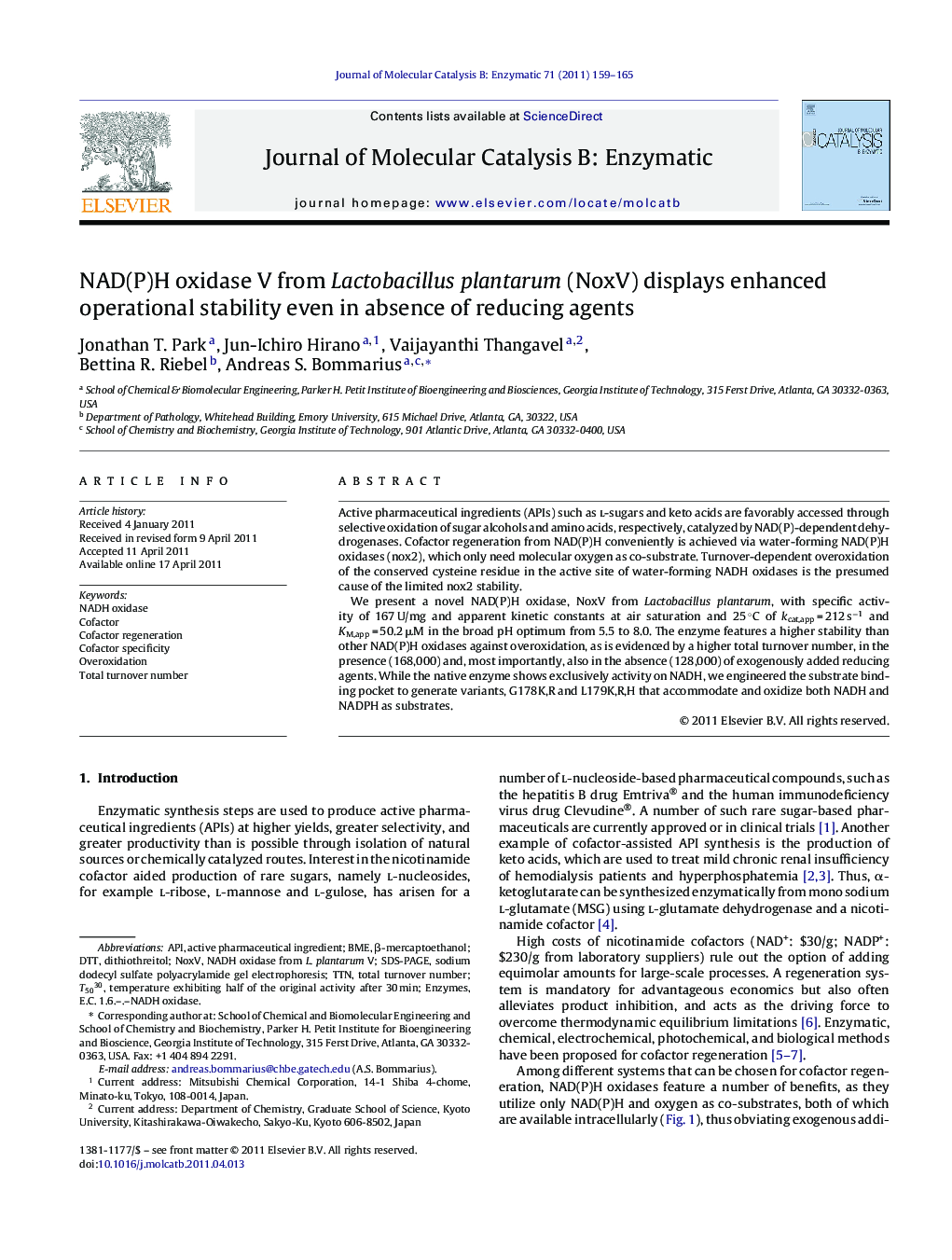| Article ID | Journal | Published Year | Pages | File Type |
|---|---|---|---|---|
| 70374 | Journal of Molecular Catalysis B: Enzymatic | 2011 | 7 Pages |
Active pharmaceutical ingredients (APIs) such as l-sugars and keto acids are favorably accessed through selective oxidation of sugar alcohols and amino acids, respectively, catalyzed by NAD(P)-dependent dehydrogenases. Cofactor regeneration from NAD(P)H conveniently is achieved via water-forming NAD(P)H oxidases (nox2), which only need molecular oxygen as co-substrate. Turnover-dependent overoxidation of the conserved cysteine residue in the active site of water-forming NADH oxidases is the presumed cause of the limited nox2 stability.We present a novel NAD(P)H oxidase, NoxV from Lactobacillus plantarum, with specific activity of 167 U/mg and apparent kinetic constants at air saturation and 25 °C of kcat,app = 212 s−1 and KM,app = 50.2 μM in the broad pH optimum from 5.5 to 8.0. The enzyme features a higher stability than other NAD(P)H oxidases against overoxidation, as is evidenced by a higher total turnover number, in the presence (168,000) and, most importantly, also in the absence (128,000) of exogenously added reducing agents. While the native enzyme shows exclusively activity on NADH, we engineered the substrate binding pocket to generate variants, G178K,R and L179K,R,H that accommodate and oxidize both NADH and NADPH as substrates.
Graphical abstractFigure optionsDownload full-size imageDownload as PowerPoint slideHighlights► The annotated Nox V from Lactobacillus plantarum is a very active NADH oxidase. ► The total turnover number (TTN) in absence of reducing agents is 128,000, a record. ► The TTN in presence of reducing agents is not significantly changed, a first. ► Targeted cofactor binding pocket mutations broaden specificity to NADH and NADPH. ► We are able to tune cofactor specificity from 100:0 to 1:5 for NADH:NADPH.
